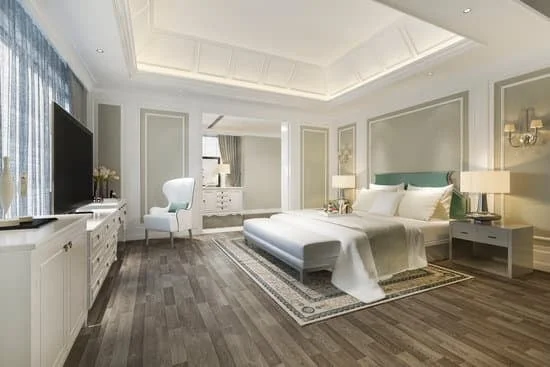Neutral colors are the cornerstone of many interior design schemes, offering a sense of tranquility, balance, and sophistication to any space. In home decoration, understanding which neutral colors work well together is essential for creating cohesive and harmonious environments. From warm beiges to cool grays, the combination of neutral colors can set the tone for a room’s ambiance and style.
The versatility and timelessness of neutral colors have made them a popular choice among homeowners and designers alike. Whether used as a primary color scheme or as a backdrop for bolder accents, neutral colors have the power to transform a space into a tranquil retreat or an elegant showcase. This article will delve into the world of neutral colors in home decoration, guiding readers on how to successfully pair and utilize these hues to create stunning interiors.
In this comprehensive guide, we will explore the significance of neutral colors in interior design and provide practical tips on pairing different hues for a cohesive look. From understanding the distinction between warm and cool neutrals to incorporating texture and patterns for added depth, readers will gain valuable insights on how to embrace the timeless elegance of neutral color palettes in their own homes.
Understanding Neutral Colors
When it comes to home decoration, neutral colors play a crucial role in creating a sophisticated and timeless space. Understanding the significance of neutral colors and how to effectively incorporate them into your interior design is essential for achieving a cohesive and harmonious look. Here is a guide for home decorators on how to understand and utilize neutral colors in their spaces:
- Explanation of Neutral Colors: Neutral colors are hues that lack strong chromatic content and can easily complement other colors. Common examples of neutral colors include beige, gray, ivory, taupe, and white. These shades are often used as base colors in interior design due to their ability to create a balanced and calming atmosphere in a space.
- Significance in Interior Design: Neutral colors serve as a versatile foundation for interior design as they can adapt to different styles and aesthetics. Their understated elegance allows homeowners to incorporate various accent pieces without overwhelming the space. Understanding the significance of neutral colors can help decorators make informed decisions when choosing color palettes for their homes.
- Creating Balance and Harmony: One of the key advantages of using neutral colors in home decoration is their ability to create cohesion and harmony within a space. By understanding how different neutral hues work together, decorators can achieve a layered and sophisticated look that exudes timeless elegance. Whether warm or cool neutrals, finding the right balance between these shades is crucial for achieving visual interest in interior design.
By grasping the concept of neutral colors and their significance in home decoration, decorators can unlock the potential of these versatile hues to create inviting and stylish living spaces. Whether used as foundational base tones or accentuating other elements within a room, neutral colors hold an enduring appeal that adds an air of sophistication to any home environment.
Pairing Neutral Colors
When it comes to home decoration, pairing neutral colors is an essential skill for creating a cohesive and harmonious space. Whether you’re going for a monochromatic look or mixing different neutrals, understanding how to pair them effectively will elevate the overall aesthetic of your interior design. Here are some tips for achieving a balanced and sophisticated look with neutral color combinations.
First and foremost, it’s important to consider the undertones of your chosen neutral colors. Undertones can be warm, cool, or neutral, and they can significantly impact how colors interact with each other.
For example, if you’re working with a beige wall paint, consider pairing it with furniture or accents that have similar warm undertones to create a unified look. Similarly, if you opt for a cool gray sofa, complement it with decor items that have cool undertones to maintain visual harmony.
Another strategy for pairing neutral colors effectively is to mix and match different shades within the same color family. For instance, in a room dominated by shades of gray, layering lighter and darker tones of gray can add depth and dimension to the space. This approach creates visual interest without introducing additional contrasting colors into the design scheme.
In addition to considering color undertones and shades, integrating textures and patterns into your neutral color palette can further enhance the overall aesthetic of your space. Combining varying textures like smooth leather, plush velvet, natural wood, and woven textiles adds tactile richness to a room while maintaining the soothing ambiance that neutral colors provide.
| Neutral Color | Undertone |
|---|---|
| Beige | Warm |
| Gray | Cool |
| Ivory | Neutral |
The Classic Duo
The classic combination of black and white in neutral color schemes has stood the test of time in home decor. When used effectively, this timeless duo can create a striking and sophisticated aesthetic that transcends trends. Here are some tips for incorporating black and white into your neutral color palette:
– **Use black and white as a foundation:** Start by using black and white as the primary colors in your space to establish a clean, modern look. This can be achieved through furniture, wall paint, or flooring in these classic hues.
– **Incorporate accents of other neutral colors:** While black and white are the focal point of the color scheme, it’s essential to soften the stark contrast with accents of other neutral colors. Consider adding touches of beige, ivory, or taupe through textiles, artwork, or decorative accessories to introduce warmth and depth to the space.
– **Balance boldness with subtlety:** When using black and white in a neutral color scheme, it’s crucial to strike a balance between boldness and subtlety. Opt for strategic placement of these colors to make a statement without overwhelming the room. For example, a bold black-and-white area rug can anchor a living room while softer touches of these hues can be added through throw pillows or wall art.
The timeless elegance of the black-and-white duo makes it an excellent choice for creating a sophisticated yet versatile neutral color palette in any home. By understanding how to use these classic colors as a foundation and incorporating other neutrals for balance, homeowners can achieve a visually captivating space that exudes effortless style. Whether employed in contemporary or traditional design styles, the pairing of black and white is sure to bring a touch of timeless allure to any interior.
Warm vs Cool Neutrals
Neutral colors are an essential element of interior design, and understanding the distinction between warm and cool neutrals is crucial in creating a cohesive and balanced space. Warm neutral colors, such as beige, taupe, and cream, have undertones of red, yellow, or orange, which can create a sense of warmth and coziness in a room.
On the other hand, cool neutral colors like gray, white, and certain shades of blue have undertones of green or blue, imparting a sense of calmness and sophistication to an interior.
When mixing warm and cool neutrals in home decoration, it is important to consider their undertones to avoid clashing combinations. For instance, pairing warm beige walls with cool gray furniture might result in an unbalanced look due to the contrasting undertones. Instead, opt for harmonious pairings such as combining creamy ivory with soft gray for a visually appealing contrast.
Incorporating both warm and cool neutrals into a space can add depth and visual interest to the overall design. By balancing warm hues with cooler tones or vice versa, decorators can create a welcoming ambiance that appeals to different preferences. Additionally, introducing textures and patterns in varying neutral shades can further enhance the interplay between warm and cool neutrals for a well-rounded aesthetic.
| Neutral Color Type | Undertones |
|---|---|
| Warm Neutral Colors | Red, Yellow, Orange |
| Cool Neutral Colors | Green or Blue |
Texture and Patterns
When it comes to decorating with neutral colors, incorporating texture and patterns is crucial in creating a visually appealing and dynamic space. Neutral color palettes have the potential to appear flat or one-dimensional, but by introducing different textures and patterns, depth and dimension can be added to the overall design. Texture refers to the surface quality of materials, while patterns are decorative designs that can be incorporated through textiles, wallpaper, or even flooring.
One way to introduce texture into a neutral color scheme is by layering different materials such as natural fibers, plush fabrics, and metallic accents. For example, mixing a chunky knit throw with a smooth leather sofa adds contrast and tactile interest to a room. Additionally, incorporating patterned elements such as geometric prints or floral motifs can bring visual excitement to an otherwise understated color palette.
Incorporating diverse textures and patterns not only adds interest to a neutral space but also creates a sense of richness and sophistication. Whether it’s through the use of rugs, throw pillows, or wall art, the strategic placement of texture and patterns can elevate the overall aesthetic of a room while maintaining the timeless elegance that neutral colors are known for.
Accent Colors
Neutral color schemes can provide a serene and balanced backdrop for home decoration, but adding accent colors can inject personality and vibrancy into the space. When choosing accent colors to complement neutral tones, it’s essential to consider the overall aesthetic you want to achieve and how the accent colors will interact with the existing neutral palette.
Choosing the Right Accent Colors
When selecting accent colors for a neutral space, it’s crucial to pick hues that complement rather than clash with the existing color scheme. For example, if your neutral palette consists of warm tones like beige and taupe, consider using accents in shades of burnt orange or mustard yellow for a cohesive look.
On the other hand, cool neutrals like gray and white can be paired with accents in shades of navy blue or emerald green for a more modern vibe.
Creating Visual Interest
Accent colors serve as focal points within a neutral space, drawing the eye and adding visual interest. Whether through throw pillows, artwork, or decorative accessories, strategically placed accent colors can create dynamic energy within an otherwise muted color scheme. By incorporating pops of color in strategic locations throughout the room, you can guide the viewer’s gaze and highlight specific areas or features.
Bringing Balance
While accent colors can add excitement to a neutral space, it’s important not to overpower the room with too many contrasting hues. A well-chosen accent color should enhance the overall design without overwhelming it. Consider using accent colors selectively and purposefully to maintain balance and harmony within the space. Additionally, using varying shades of the same accent color can create depth while still maintaining a cohesive look within your neutral color scheme.
Final Thoughts
Neutral colors have stood the test of time in home decoration, offering a timeless elegance and versatility that make them a popular choice for interior design. When used thoughtfully, neutral color palettes can create a balanced and calming atmosphere in any space, making them an ideal option for those who appreciate understated sophistication in their homes.
As you explore the possibilities of combining neutral colors to create cohesive and harmonious spaces, remember to consider the undertones of each hue and experiment with textures, patterns, and accent colors to add depth and visual interest.
While black and white are the classic duo in neutral color schemes, there are numerous other combinations to explore. Whether you prefer warm neutrals like beige and taupe or cool neutrals like gray and white, understanding the distinction between these tones can help you create a welcoming environment that reflects your personal style. By incorporating different textures and patterns into your neutral color scheme, you can add dimension to the space without compromising its serene ambiance.
In conclusion, embracing the timeless elegance of neutral color palettes allows homeowners to create spaces that exude sophistication and refinement. The enduring appeal and flexibility of neutral colors make them an excellent choice for those seeking a versatile yet elegant approach to interior design.
So go ahead and experiment with different combinations of neutral colors in your own home – whether you opt for a monochromatic look or mix warm and cool tones, there are endless possibilities for creating a stylish and inviting environment.

I’m thrilled to be your companion on this exciting journey through the world of home decor and design. With a passion for turning houses into homes and a keen eye for the finer details, I’m here to help you transform your living spaces into beautiful, functional, and meaningful havens.





